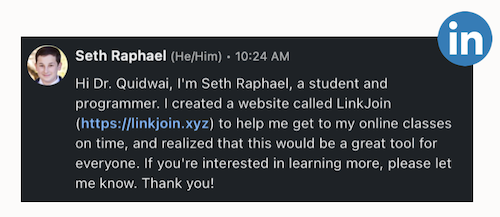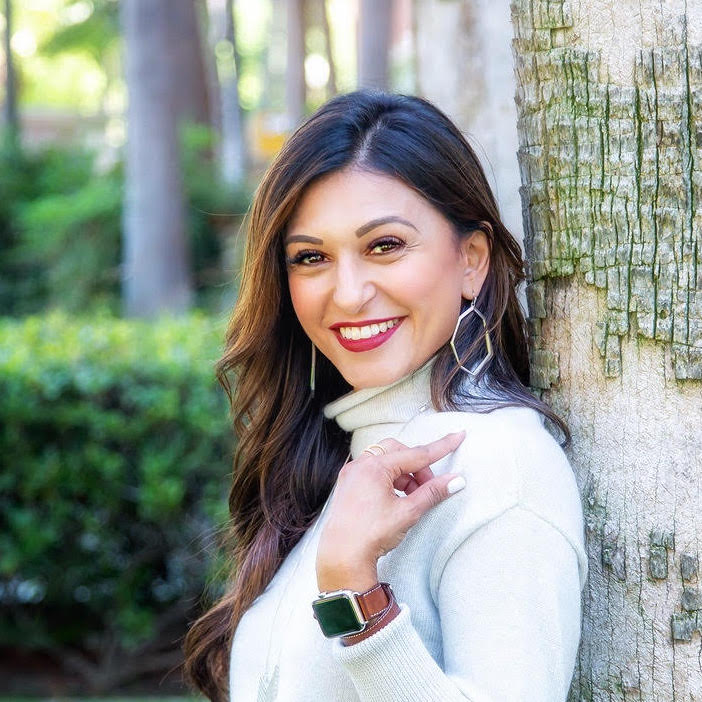When we enable learners to share their skills, strengths, and experiences with our professional network, we increase the connection between what is happening inside and outside of school, increasing their exposure and access to possibilities.
Dr. Sabba Quidwai, Founder of Designing Schools
Imagine if every student introduced themselves by saying:
- Hi! I’m ____ and I’m working on _____.
Instead of:
- Hi, I’m a freshman and I go to [insert school name].
Do you notice the difference?
In the first example, the introduction is personalized. Why? Because the experience is personalized. In the second, the introduction is generic. Why? Because the experience often is.
What would happen if students viewed their school experience as a start-up business — and themselves as its CEO? Would schools then become a place for students to experiment with new ideas, try new things, and receive mentorship and advice from educators? Young people would develop the mindset and skills to recognize their strengths, navigate ambiguity, and express their goals with the help of educators.
From entrepreneurial possibilities to varied post-secondary paths to employers seeking a workforce with non-traditional degrees, learners have numerous opportunities after graduation. When we enable them to share their skills, strengths, and experiences with our professional network, we increase the connection between what is happening inside and outside of school, increasing their exposure and access to possibilities.
Meet Seth Raphael. In 2020, he built upon a summer coding class he had taken to solve a challenge he and his peers were experiencing — feeling overwhelmed by the many Zoom links and, as a result, being late to class. He created LinkJoin. LinkJoin organizes links for virtual meetings and automatically starts them up. To build awareness and share his ideas, Seth joined LinkedIn. He recognized that a professional presence would give his idea exposure to a variety of people who could help him advance in his goals. I first learned about Seth when he sent me this message.

Impressed by his confidence and curious about his experience, I invited Seth to be a guest on my podcast. Seth isn’t alone in creating these projects. Every day, learners are working on projects and engaging in insightful experiences inside and outside of school. How might we help learners showcase their interests, and strengths through their projects with a professional network?
Four Competencies for Learners to Design Their Future
In, “Taking Student Support to the Next Level,” Julia Freeland Fisher shares that these opportunities not only advance students’ chances of economic mobility, but also provide them with direct emotional, academic, and financial support.
When we help learners make the connection between their interests, strengths, goals, and aspirations and empower them to share those with a network, they become part of a community that helps them to feel curious and confident about what’s next. To do this, consider the following four competencies and some exercises to help implement them.
1. Self-Awareness: The Stories We Tell Ourselves
Self-awareness is the foundation upon which everything else is built. We’re all great at something, but we can’t be great at everything; we each have a story in our heads of how we operate within the world. In the book, Life is in the Transitions: Navigating Change at Any Age, author Bruce Feiler shares, “Life is the story you tell yourself. But how you tell that story — are you a hero, victim, lover, warrior, caretaker, believer — matters even more.”
Exercise – The 30-Day Challenge: When we help learners become aware of the stories they tell themselves about what they can and cannot do, we can help them change the beliefs inside their heads. To do this, it’s essential that they first identify their strengths and identify how they have leveraged these strengths throughout their lives. Consider having students take the Sparketype, a free assessment created by Jonathan Fields to learn what energizes you and what drains you.
Once students have identified what energizes them and what drains them, invite them to reflect each day with three journal questions:
- What sparked me today?
- What drained me today?
- What did I learn about myself today?
2. Get SMART about Your Goals
We should provide learners with the methods to turn ideas into action, in addition to encouraging them to dream about future possibilities. As Antoine de Saint-Exupéry said, “A goal without a plan is just a wish.” While education typically emphasizes one outcome — getting a job — we should encourage students to envision long-term interests and career objectives, rather than a specific job. Your long-term goal should be to develop sets of abilities or experiences that can assist you in a variety of jobs, no matter where you end up. It can be useful if your priorities change in the future, or if the job market changes. The average person has 12 different jobs in their lifetime, and that number is increasing. When we’re specific about what we want, it makes it easier for other folks to help us and introduce us to people who can assist us.
Exercise – Getting SMART: Use the SMART (specific, measurable, achievable, relevant, time-bound) goal structure to have students create a personal and professional goal. Then, encourage them to break down the goal into small actions that can be done over the next five days, five weeks, and five months using the following questions:
- What steps will I need to take?
- Whose support will I need along the way?
- What challenges might I experience?
- What moments will I celebrate?
Networks are non-negotiable in today’s world because opportunities arise at the intersection of what you know and who you know.
Dr. Sabba Quidwai, Founder of Designing Schools
3. Build a Network Before, Not After You Graduate
A network is made up of people you know, both online and offline. Another word for your network is social capital. Building a network is not just about meeting people to get a job. It’s also about:
- Staying informed of emerging trends
- Finding mentors and sponsors
- Having exposure to different professions
- Building your reputation
- Having the freedom to change career paths
- Being a lifelong learner
Networks are non-negotiable in today’s world because opportunities arise at the intersection of what you know and who you know. This isn’t just about you finding opportunities, it’s also about other people finding you through the projects, stories, and content you share.
The hosts of Brown Table Talk share, “We are over-mentored and under-sponsored.” What’s the difference? Anyone can be a mentor because we can follow them and learn from them. A sponsor is someone who actively takes steps to introduce you to people and can impact your career by giving you access to opportunities. To do this, we identify the three layers in your circle of influence:
- C1 – People you know
- C2 – People who you can be introduced to through people in C1
- C3 – People you would like to know
Exercise – Find and Be Found: Have students create a LinkedIn profile. LinkedIn serves as both a portfolio and a place for building a network. In the book, Linked, the authors share:
- 97% of recruiters use LinkedIn to find candidates
- 85% of jobs are filled through networking
- 70% of jobs are never even published
4. Show (Don’t Tell) with Content Creation
Adobe recently published a report called The Deciding Factor. They shared that there is a divergence amongst what college admission counselors, high school counselors, and students think are the top three factors on an application.
College counselors said showcasing creative skills was one of the top factors, which wasn’t on the list of priorities for high school counselors or students. Students, however, were close in what they identified; they had listed personality and authenticity. Today’s learners recognize the importance of sharing their personalities through their projects and experiences. As they build a portfolio, it’s essential that they are able to easily showcase these skills in front of an audience of people who they know, and those who they do not yet know.
At the beginning of this post, I shared the power I experienced in the title, “I’m a student.” When we pair this with clear goals and showcase our work, we build trust with our network. When we reach out to ask for advice, introductions, or anything else, we place learners in a position to make a strong first impression. In today’s world, your first impression is often a digital impression. Explicitly teaching these skills is one way to create more access and bridge the opportunity gap.
Exercise – My Top 3: Our students are creating every single day, both inside and outside of school. Guide students to identify two to three pieces of work they can add to their LinkedIn profile that align with their goals and showcase their skills and strengths.
Being a student or learner is one of the most powerful titles a young person will hold. It is a time for them to discover who they are, what they enjoy, and what their strengths are and to build relationships with people they want to learn and grow with.
As author William Gibson says, “The future is here. It just isn’t evenly distributed.”
When learners are empowered to discover their strengths, set strategic goals, and build a network of people they can learn and share with, they become the drivers of a system that supports young people to design a future that is uniquely theirs.

